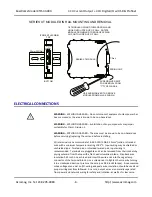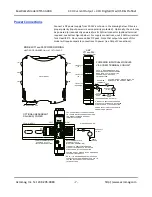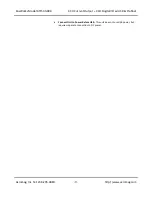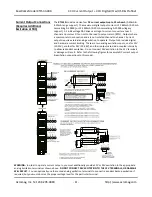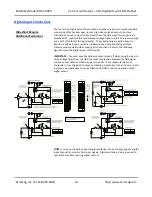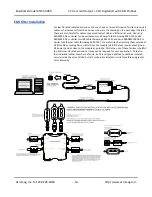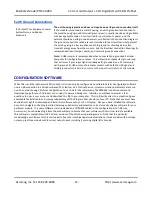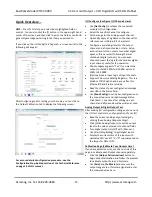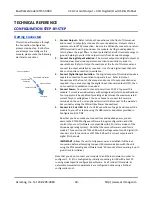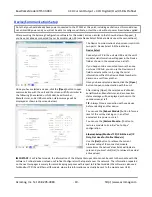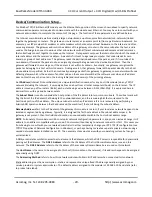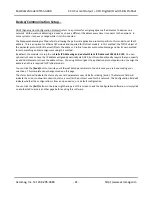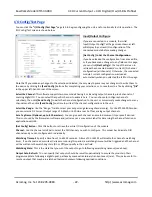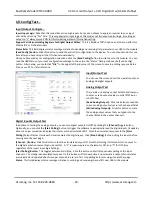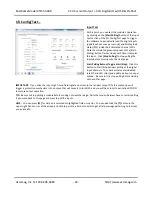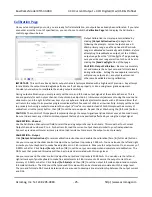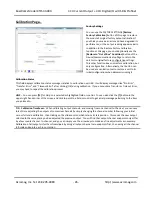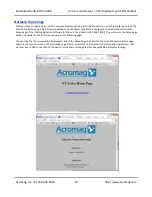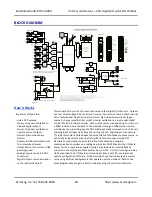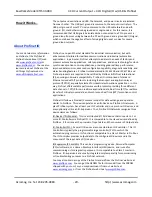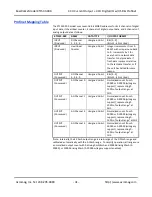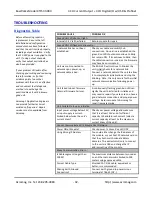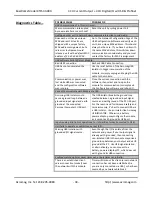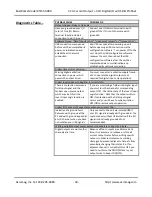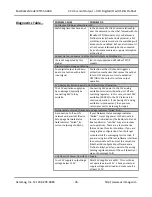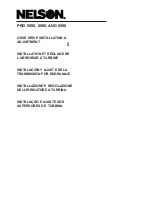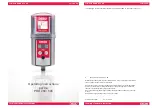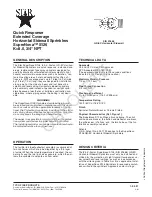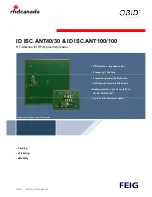
BusWorks Model XT1533-000
4 CH Current 4 CH Digital I/O w/USB & Profinet
Acromag, Inc. Tel: 248-295-0880
- 20 -
http://www.acromag.com
- 20 -
http://www.acromag.com
Device/Communication Setup…
For Modbus TCP/IP & Ethernet/IP models, use the Ethernet Setup portion of the screen shown above to specify network
communication parameters required to communicate with the module over Ethernet. You may have to consult with your
network administrator to complete the contents of this page. The function of these parameters are defined below:
The Internet or world-wide web is actually a large network made up of many smaller networks (sub-networks) linked
together by gateways or routers. The gateway or router serves as an access point to/from a particular sub-network. For
example, your ISP provides DSL modems or cable modems which connect your local hardware to the Internet and often
serve as gateways. The gateway address is the address of this gateway or router in the same subnet as the host, and is
used as the bridge to connect to various other sub-networks with different sub-network addresses and address masks,
that collectively connect together to make up the Internet. Data packets sent over the Internet contain both the sender’s
Internet address and the receiver’s address. A packet is first sent to a gateway computer that understands its own
domain or group of host addresses. The gateway reads the destination address of the packet, and if it is outside of its
own domain, it forwards the packet on to an adjacent gateway that again reads the destination address. Then that
gateway will forward the message on, if the address is not within its domain. Eventually, one gateway recognizes the
packet as belonging to a host within its domain. Finding a match, that gateway forwards the packet directly to the host
whose address is specified. Rather than continually passing a packet from gateway to gateway, some networks will use a
default gateway which is the address of another node on the same network that the software uses when an IP address
does not match any other routes in the routing table (address domain) of the primary gateway.
An
IP Address
(Internet Protocol Address) is a unique identification number for any host (this module) on any TCP/IP
network (including the internet). It uniquely defines one host from all other computers (hosts) on the Internet. The IP
address is made up of four octets (8 bits), each octet having a value between 0-255 (00H-FFH). It is expressed here in
decimal form, with a period between octets.
The
Subnet Mask
is used to subdivide the host portion of the IP address into two or more subnets. The subnet mask will
flag the bits of the IP address that belong to the network address, and the remaining bits that correspond to the
host/node portion of the address. The unique subnet to which an IP address refers to is recovered by performing a
bitwise AND operation between the IP address and the mask itself, the result being the subnet address.
Gateway Address
refers to the IP Address of the gateway this module is to cross, if your local area network happens to be
isolated or segmented by a gateway. Typically, it is assigned the first host address in the subnet address space. If a
gateway is not present, then this field should contain an unused address within the host subnet address range.
NOTE:
Fortunately, this model uses USB to setup its network configuration parameters, and you can instead change its IP
address to an address compatible with your own PC network without having to network connect to it first. This saves you
from having to consult with your network administrator to either temporarily change your PC’s TCP/IP configuration (see
TCP/IP Properties of Network Configuration in Windows), or perhaps having to create a separate private network using a
second network adapter installed in your PC. The necessary steps would vary with your operating system, but can get
quite involved.
A DNS server relates symbolic names to actual numeric IP addresses, while the DHCP server is responsible for dynamically
passing out IP addresses. The
DNS 1 Address
refers to the IP address of the first Domain Name Server used on this
network. The
DNS 2 Address
refers to the IP address of the secondary Domain Name Server used on this network.
The
Host Name
is the name to be assigned to this host (this module on the network), if its address happens to be assigned
dynamically using DHCP.
The
Addressing Method
refers to how this network module will obtain its IP address when connected to its network.
Static addressing is as the name implies
—
static
, and represents a unique fixed IP Address generally assigned by your
service provider or system administrator. The default address assigned to this module is 192.168.1.100 and static (refer
to product side label).

